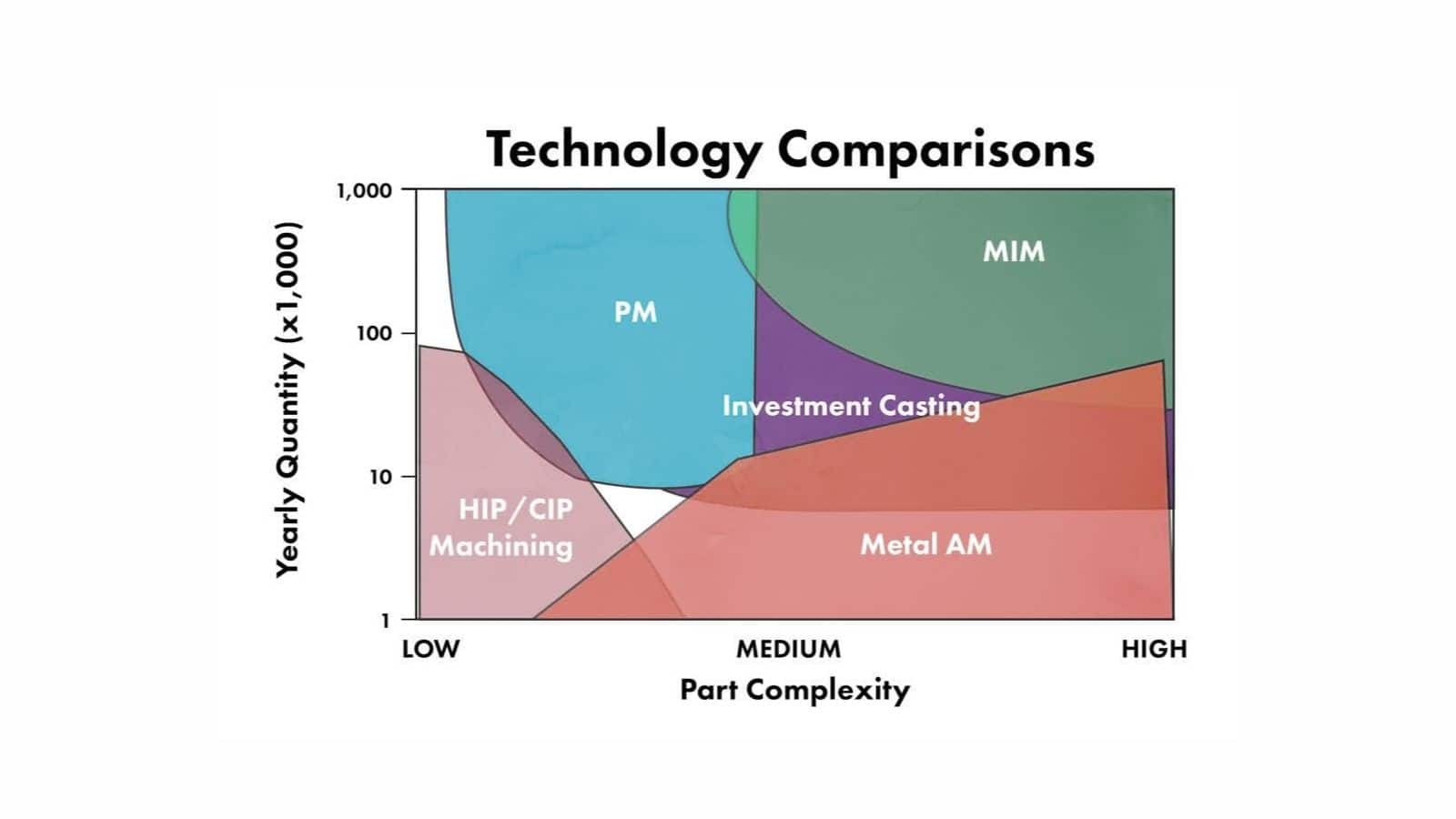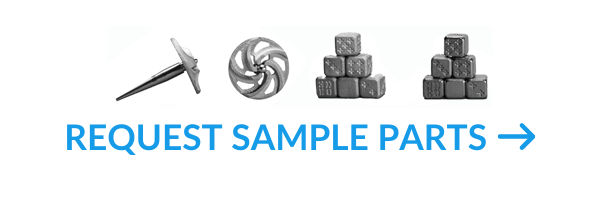From machining to MIM, metal parts buyers have a wide range of options for addressing their part-production challenges. The key in choosing from among them is to remember that each technology brings something different to the table, and every part has unique requirements.
Metal fabrication does not lack for depth as an industry. No fewer than 6 distinct—and commonly used—techniques exist for the manufacture of metal pieces and parts in 2018. Each can be considered the “best” option given certain conditions. For this reason, it’s often tough for an organization looking to outsource a specific production run of components to decide just which method is right for them. The list of options is long, and it’s growing more nuanced by the day.
At least 6 common metal production processes are available to manufacturers today, including sintering, casting (sand, investment, die), machining, metal injection molding, and 3D metal printing.
Segments of the sector are undergoing a period of rapid change. Metal additive manufacturing (AM, or 3D Printing) is reshaping widely held notions of what’s possible, both its direct use in parts-production and its usefulness in combined processes, such as hybrid investment casting.
It’s important for businesses to understand the full gamut of possibilities in order to make the best decisions for their customers and their own bottom line. For each of the major traditional techniques, a two-part situational analysis should be used to judge suitability.
Part Complexity Versus Production Volume
For all five conventional methods, the chart above illustrates the relationship between two primary factors—complexity and volume. These are the two considerations that ultimately determine cost-per-part in each scenario. Differing capital requirements, size limitations, and process difficulties give each method a unique cost profile in terms of the speeds at which they can be used to produce parts of varying complexity.
Read on for an explanation of what the graph is visually communicating.
CNC Machining: medium-low complexity, medium-low volume
Machining wins out in situations that call for a lower volume of medium-to-low complexity components. The physical size of many CNC machines—such as specialized lathes, or equipment for bending and folding—makes them a good choice for the manufacture of larger metal components that aren’t overly intricate. However, because re-tooling (and re-programming) can eat up a significant number of labor hours with this method, it becomes costly on a per-part basis in the production of smaller, more complex components.
Powder Metallurgy (PM)/ Press-and-sinter: low complexity, high volume
PM, also known as press-and-sinter, is a process by which metal powders are compacted with heat or pressure to form a green part, which is then bulk sintered in a furnace. The advantages of this technique are fairly simple: it’s streamlined. There aren’t that many steps that go into the process. The drawback? It’s only good for relatively simple geometries and requires high upfront tooling cost.
Investment casting: high complexity, medium-low volume
This technology has been around for thousands of years. By using easily removable (read: melt-able) wax to create a mold, it allows for the economical fabrication of far more detailed parts than PM. Still, the high labor cost and limitations of casting molten metal make it less suited for volume production. There are also challenges with re-tooling costs that hurt machining’s cost-per-part figure when design changes are necessary. It’s a nice middle-of-the-road option that allows for medium-sized runs of complex pieces.
Die casting: medium complexity, high volume
Die casting is a higher-leverage proposition than investment casting. The capital costs associated with the necessary equipment are higher, but the trade-off is that the unit cost of parts tends to be lower. The process requires only 5 main steps, which is what makes volume production using this method so appealing. Component size and lack of materials are limitations, and each new die-cast component requires a separate capital investment. For complicated aluminum pieces, die casting is a great option.
Metal injection molding: high complexity, high volume
Metal injection molding (MIM) currently paces the market for large runs of small, intricate items. Injection allows for the inclusion of multiple cavities within a single mold, and the mold designs can be very complex, which is why the technique is better-suited for complex applications than the other options. The mold creates “green” parts, which then need to be put into a furnace for bulk sintering. The green parts are created by mixing metal powder and a significant amount of binder/lubricant which needs to be burned out before sintering. This debinding stage limits the size of MIM components, which forces the technique to focus only on small parts. These are two of the biggest drawbacks of MIM. Despite this, MIM is extremely cost-effective for organizations looking to achieve net shape in high volume with low costs.
The Disruptor: Metal 3D Printing
Every technology has its place and occupies a valuable niche in the metal manufacturing ecosystem. Change, however, may be on the horizon, with metal 3D printing bringing game-changing capabilities to engineers and product designers.
Metal 3D printing technology has evolved to such a point in recent years that it can effectively compete with traditional manufacturing when it comes to highly complex, low volume products. In fact, 3DEO is in high-volume production in stainless steel with many customers today. New, disruptive technologies are entering the market every month, and many of these technologies will displace conventional manufacturing methodologies.
3DEO – Metal 3D Printing
3DEO’s unique process has unlocked the value of metal AM by dramatically lowering costs-per-part across the board to widen 3D printing’s share of the addressable market. Learn more about how we do it here.
{{cta(‘8e2d4675-7c44-4d4b-99af-c8ef1aa04dce’)}}



